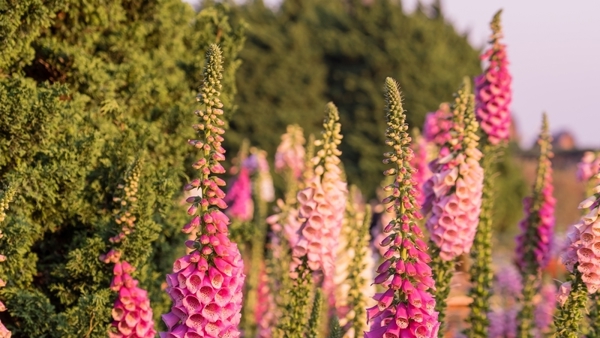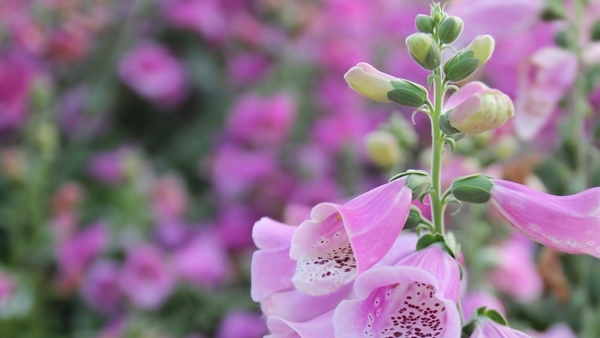Yates Account
Join now
Create a Yates account today!
Sign up to join the Yates Garden Club for monthly e-mails packed with seasonal inspiration, tips for success & exclusive promotions.
Plus if you’re a Garden Club member you can take part in the Yates Growing Community - a blog to share successes, get advice & win prizes in fun challenges along the way!

Forgot password
Enter the email address associated with your account, and we'll email you a new password.

Another of the tall annuals, Foxgloves (Digitalis purpurea) are a must for any cottage garden or to just add a touch of colour and class to your annual flowering beds. They are available in a wide range of colours from cream, purple to pinks and provide a lovely splash of life in the part shaded areas of your garden.
How to grow foxgloves in a garden
- Choose a spot in the garden that receives part shade.
- Prepare the planting area well by digging in Yates Thrive Natural Blood & Bone with Seaweed.
- Sow seeds directly where they are to grow or in trays of Yates Black Magic Seed Raising Mix. Press lightly into the surface of the soil and water well.
- Water gently and keep moist through germination period.
- Once seedlings are approximately 5 cm, mulch with organic mulch, such as bark chips, woodchip or pea straw.
- Once buds appear, feed with Yates Thrive Rose & Flower Granular Plant Food. TIP: For an added boost apply Yates Thrive Roses & Flower Liquid Plant Food.


How to grow foxgloves in a pot
- Choose a pot at least 200mm wide and deep. Position in part shade.
- Fill the chosen pots with quality potting mix, such as Yates Premium Potting Mix.
- Plant directly into the pot by pressing the seeds lightly into the surface of the pot. Lightly cover with Yates Black Magic Seed Raising Mix.
- Water gently and keep moist through germination period.
- Once the seedlings have grown at least 5 cm, place a light layer of organic mulch, such as woodchip or pea straw around the base of the plant.
- Feed every 1 to 2 weeks with Yates Thrive Roses & Flower Liquid Plant Food. TIP: For an added boost apply Yates Thrive Natural Fish & Seaweed+ Plant Food Concentrate.
Ascending spires of exquisite bell-shaped blooms in cream, purple and rose colours add life to shaded areas. Tall, elegant and stately flowers.
Foxglove 'Coral Chimes'
Coral-pink bells with a pastel blush of peach positively drip from tall, stately stems. Foxgloves add strong vertical accents to garden borders.
Growing tips
- For best colour and prolonged flowering, choose a lightly shaded moist position in the garden.
- Water regularly at base of plant to avoid fungal diseases. Remove central flower spike when blooms fade to encourage smaller side shoots to develop.
- These plants can self seed. If you don’t wish to have blooms appearing each year, remove the flower heads before they produce seeds.
- These plants are poisonous. These are not recommended to be planted in gardens frequented by young children.
More Plants
Orange Trumpet Vine
Orange trumpet vine, with its brilliant cascading masses of orange tubular flowers, is one of the most spectacular winter flowering climbers.
Spring Stars
Spring Stars are a versatile addition to any garden with delightful lavender-blue, star shaped blooms.
Flax
Flaxes (Phormium spp.) are highly versatile plants which don't mind swampy or dry conditions. Great for large pots or planted en-masse in garden beds.
Proteas
Not just any old blossom, protea flowers are blooms with attitude. If you can give them full sun and reasonable drainage, proteas will love you.
Recommended products
Yates Thrive Natural Blood & Bone with Seaweed
A certified organic garden input boosted with NZ Seaweed to gently nourish plants, enrich the soil and encourage a strong healthy root system.
Yates Black Magic Seed Raising Mix
Specially formulated for trouble-free seed raising in trays (or outdoor seed sowing direclty into the ground) and propagation of cuttings.
Yates Thrive Rose & Flower Granular Plant Food
Specially formulated to grow all types of flowers. With high potassium for large & abundant flowers, added calcium & iron for stronger flowers.
Yates Thrive Natural Fish & Seaweed+ Plant Food Concentrate
A complete plant food enriched with natural fish, seaweed, humates, molasses and more - boosted with NPK to improve plant and soil vitality.


















Share
Share this article on social media